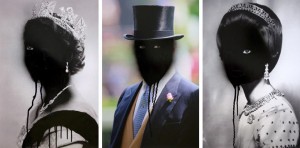
Gallery 4A has been selected by Art Basel’s International Crowdfunding Jury to be part of Art Basel’s Crowdfunding Initiative that supports projects from non-profit visual arts organisations from around the world.
It’s not often I agree with art critic John McDonald (sorry John) but this time, I lean towards much of what he said in his recent article on philanthropy published by Raven last week. His comments, though, can be taken further.
John’s is more a lamentation on the lack of philanthropy in the visual arts. Why, he asks, when we have so many more billionaires in 2014, do we not have a regular stream of philanthropists eager to donate large amounts of money to the visual arts in this country.
It is not just philanthropy – the giving of money – but the whole way in which the non-profit visual arts industry is meant to find sufficient income to engage, prosper, advocate, enthuse, innovate and present. It is a very tall order and becoming tougher in an increasingly competitive non-profit world.
Be it Australia Council created organisations such as Artspace or First Draft, the AGNSW, MCA or the network of local council regional galleries, effectively, each of these organisations is totally reliant on all forms of fundraising to source income – grants, sponsorships, fees and donations. Despite the best of intentions and the most energetic of actions, the demands of sourcing the funded dollar are overwhelming.
For me, the heart of the problem, is the way in which the visual arts is perceived in this country and the level of importance or not it is generally given. Same goes for fundraising.
John finishes his article with “In Australia, the art of fundraising has to be nothing less than a carefully planned seduction tailored to each individual case.”
Yes I agree – fundraising is an art. Not a gentle art, but a subtle, powerful, competitive and driven one. Yes, it requires careful planning and strategies to enact those plans, but the starting point is way back before the seduction. I agree with John’s observation that, generally, fundraising in the visual arts is misunderstood and, at times, mismanaged. And, from what I am learning at QUT Australian Centre for Philanthropy and Nonprofit Studies under the enthusiastic and intelligent tutelage of Dr Wendy Scaife, is that, until we appreciate what it takes to fundraise, we (in the visual arts) will always be way behind.
Increasingly, fundraising is becoming an area of international academic research. QUT’s Centre has been around for 15 years. The research draws on other disciplines such as psychology, business management, strategic planning, statistics and government policy to understand what motivates people to give and remain loyal supporters. Such research engenders a framework from which an informed profession can operate. It is a fascinating area.
Fundraising is not a dirty word. It is about recognising all raising of funds – be it from government, corporates, private sources – is a major part of the function of any arts organisation, equal to that of bringing a vibrant cultural practice to a receptive audience.
Fundraising is about developing (preferably long term) relationships with people who share similar values, who want to make an investment, to make a difference. We cannot sit back and expect the wealthiest to just give. It is not enough to just open your diary and contact your friends. We need to do more. It is about starting conversations which reveal connections between us and potential donors which are meaningful and real; finding the right fit for organisation and donor. It is about engagement, about educating and nurturing the potential, a bit like educating and nurturing the potential collector. And then, and most importantly, it is about keeping these people close, respected, informed. Our track record in this area, particularly recently, is not good.

Tony Garifalakis Umtitled from MOb Rules (Family) 2014. AGNSW Project Space exhibition, supported by Andrew and Cathy Cameron. Image courtesy the artist and Hugo Michell Gallery, Adelaide
Very few people with proven passion for and experience in the visual arts are trained in the profession of fundraising. Think of the incredible successes some universities have had recently with major benefaction: Andrew and Nicola Forrest’s gift of $65m to higher education in WA; Graham Tuckwell’s gift to ANU of $50m and Dr Chau Chak Wing who gave $20m to UTS to transform the campus into one for 21st century teaching, research and learning. These donations did not fall into the academic gowns of those institutions out of the blue. Such largesse would have been very carefully researched, tested, planned and then crafted by the extensive, well-resourced foundation departments. On the flip side, the donor also would have looked very carefully at the recipient organisation and been assured of its worthiness. It cuts both ways.
Philanthropy Australia offers real support and Creative Partnerships (the business of the Australian Business Arts Foundation AbaF) offers expertise and practical advice on specifically arts philanthropy, fundraising and partnerships.
What began as a pilot program in 2013 proved so popular that the grant program Plus 1 Matched Funding is being offered again by Creative Partnerships. Plus1 will allocate $1.75million in matched funding for development/fundraising campaigns that will assist arts organisations attract new donors and grow stronger donor networks. This is precisely the type of funding program required to create real opportunities for the visual arts. The case studies of Artsource is worth reading.
I hear what John says about AGNSW and its recent launch of the proposed Sydney Modern. I am not so sceptical. It was the launch of an idea. It was an introduction to the potential. No plans, nothing concrete – just a big vision of the potential and Michael Brand (Director) was inviting us to come along with him. That is what should ignite enthusiasm: the big picture, dream stuff. That is what inspires benefaction.
The process for bringing this vision to a concrete reality is underway and yes, there will be a time to talk turkey, to discuss the dollars, research who to ask and then prepare the seduction. And yes, those very wealthy families with long-standing, close associations with the Gallery should dig deep to contribute. Should they not contribute in a major way, history will judge their time as cultural leaders in this town as hollow and ego driven. That is their legacy which they themselves will determine.
The number of major obvious benefactors of the visual arts is very small. For contemporary art, it is even smaller. This pool needs to grow and it is the industry which must grow it. Vis arts professionals need to be very clear about their responsibility to developing benefaction for their own industry.
AGNSW’s major fundraising drive has the potential to focus a spotlight onto the funding needs of all visual arts organisations. Their story is good one and will be a much publicised one in this town. Many other visual arts organisations will have similar stories though on a different scale. Should the Gallery succeed in achieving its target of $400million, then we all have the potential to ride on the coat tails of this success – the pool will have to have increased. Now is the time to look closely at your Board and its contributions, staffing structures and volunteer base, get organised and get ready to tag along.
Philanthropy is not dead in this country. It is slowly improving. From the glass half-full perspective, 6 out 10 Australians in a household with a gross income of $1million+ claimed a deduction from a donation to a charitable cause in the last financial year (McGregor-Lowndes and Crittall, 2014). Most donations were to universities, medical research, disaster relief and human services. No doubt though there were a few visual arts organisations which shared in the largesse.

Peter Lundberg Barrel Roll 2012. Balnaves Sculpture by the Sea Collection, in the Royal Botanic Gardens Sydney
From the glass half-empty perspective, the assumption is that 4 out 10 of substantial means did not give at all, or did not give a sufficient amount which warranted the paperwork of claiming a deduction. Yes, an incredible fact. They are not lost to us, however, they just need nurturing. And this will take time, education and leadership.
Non-profit organisations do what commercial organisations don’t, won’t or can‘t do. Their roles, be it in health, or homelessness, research or culture, are to push the envelope and change the status quo. Theirs is not the capitalist agenda, to drive the profit higher, but to make the world a better place. The one thing they share in common is motivation and hard work. Be it children’s health, medical research, disaster relief or the visual arts, sourcing funds, whether it is the fraught politicised government grant, competitive sponsorship or elusive benefaction, requires effort and creative intelligence. We have that. Vis arts organisations need to replace an expectation of benefaction with creative thinking, professionalism and resources.
We have many inspirational stories to tell and much to be positive about. We just have a lot of work to do.






2 Comments
Nice piece Fi. This deserves extended discussion.
Interesting Fi. Looking forward to lunchtime discussion.